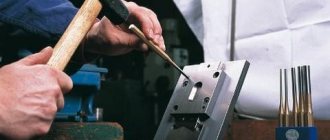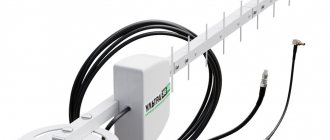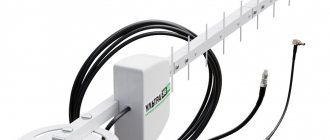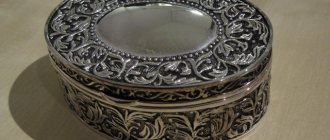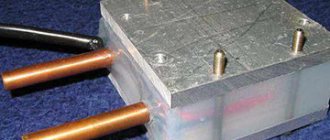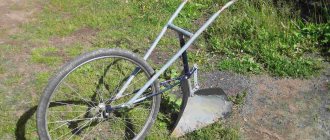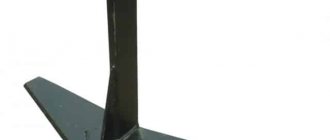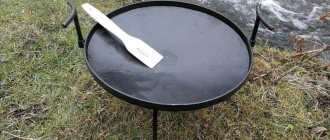A grain seeder for a walk-behind tractor belongs to the category of agricultural machines used to evenly plant seeds into the soil. Before the invention of the seeder, crop seeds were scattered manually, as a result of which the required seeding density was not achieved.
In addition, planting seeds by hand requires a lot of physical effort. Economically, manual sowing is not justified: scattered seeds fall unevenly onto the soil, and much more is wasted than when using a seeder. Also, manual planting leads to uneven distribution of seeds, as a result of which the soil is quickly depleted.
Homemade seeder
Homemade seeder
A seeder for a walk-behind tractor is one of those attachments that is simply necessary for full-fledged agricultural work. Agree, I want to delegate the most complex and time-consuming processes and work on the field to specialized machines. The walk-behind seeder has been very popular for decades. We suggest you make a homemade seeder .
Planting a crop is a very complex and routine process that is difficult to carry out, even with a small plot. What can we say about working in the fields and large farming areas. This is why seeders for walk-behind tractors are very popular all over the world, including in our country. The seeder itself has a fairly simple operating principle. Its main components are the rear wheel and chain drive, which represent a single, smoothly working mechanism. By driving the rear wheel, the chain drive allows the seeds to fall into the prepared soil.
The speed of sowing planting material is pre-regulated. You can also set in advance the expected sizes of the bulbs and seeds to be sown.
Quite stringent agrotechnical requirements are put forward for modern seeders. The device must be designed in such a way that it takes exactly one seed from the hopper and delivers it to the soil without damaging it. Today there is a huge variety of seeders for walk-behind tractors: from single-row to eight-row. However, let's talk about how to design a homemade seeder .
Let's look at how to make a two-row homemade seeder.
Such a device should consist of two independent sections, each of which will have:
— seed hopper;
— a mechanism regulating the seed sowing rate;
The reinforcement on the frame of the sections must be movable so that it is possible to control the row spacing and vary it from 15 to 70 cm. The running wheel of a homemade seeder will drive the working parts of the reel-type sowing apparatus. In order to orient the crops, a double-sided marker should be installed.
The frame of a homemade seeder is made of 40*40*700 mm corners, and the bunker for planting material is made of boards. Its optimal dimensions are 240*210*700 mm. From an old grain seeder it will be convenient to use a bobbin-type sowing unit. And for support wheels, old combine sprockets are perfect. The hanger extension can be easily made from 6*30 strip steel with a length of 800 mm. It is necessary to note that the mounting stand for the seed hopper, the mounting stand for the seeding shaft, roller brackets, coulters, fastening chains, a square and various other necessary parts should be made in the workshop. It won't take much time or effort. Perhaps some of these parts can be found on your farm. Below is a diagram for making a homemade seeder.
Making a seeder with your own hands is a simple and quite exciting process. Here it is only important to maintain proportions and fulfill the basic requirements for the size of materials and their comparison with each other.
Remember that by making a homemade seeder, you will receive an excellent tool, however, you will not have any guarantees regarding the correctness of its operation and durability. If you want to buy a high-quality branded product, contact the My Motoblock online store to purchase a seeder.
On our website you can also read about the homemade production of other attachments for walk-behind tractors, for example, lugs, creepers, mowers, potato diggers, potato planters, plows, etc.
Generally speaking, making tools for a walk-behind tractor with your own hands is a very interesting process. Using all sorts of old, outdated components, components, tools and devices, you can create new useful units that will help you in housekeeping. Drawings, which we often attach to our articles, will help you make your work easier and save time and effort. Have fun creating.
Schemes and drawings
The grain crusher from the washing machine contains the following components:
- grain bin;
- frame;
- rotor;
- shaft;
- unloading hopper;
- pulley (the requirements of paragraph 40 of GOST 20889-88 are met);
- V-belt;
- electric motor;
- frame with table;
- loading and unloading valves (valves).
Drawings of analogues made on the basis of a motor from a vacuum cleaner, electric drive of an angle grinder, drive and mechanism of a meat grinder differ little from the device made on the basis of a (semi-) automatic washing machine. The principle of operation of the device is no different - which cannot be said about the type of chopping mechanics used.
Features of seeders
Like any unit intended for agricultural work, devices for walk-behind tractors have their own characteristics, both structural and operational. The design of each of them has elements common to other types. The whole difference is related to the seeds that are sown - for each type of seed they use their own design for a walk-behind tractor.
The main structural elements of this mechanism:
- openers;
- containers for storing seeds;
- closing wheels;
- mechanisms for sowing.
All of them are present in every mechanism, regardless of what exactly it is intended for. Thus, sowing devices direct seeds to the outlet holes, and wheels embed them into the ground in each model. The only difference is the diameter of the holes mentioned. The task of the coulters is to prepare the soil.
The connection between the walk-behind tractor and the sowing unit occurs using the hitch supplied with the latter.
As for the features of the mechanism, everything is quite simple. It always works according to the same scheme:
- First, the coulters lay out the beds by furrowing the soil.
- At the same time, a dosed amount of grains (mixed with fertilizers) is supplied from the storage to the holes.
- Seeds fall out through the holes.
- The wheels cover the furrows and compact them.
Attention! The design of individual models adds virtually nothing to the above scheme.
From the Bulgarian
A characteristic property of a manual electric grinder is the axis located perpendicular to the cutting disc. To make a grain crusher from an angle grinder (grinder), do the following.
- Mark and cut a rectangular piece from thick (1 cm or more) plywood.
- Cut a round hole in the cut piece of plywood - in the shape of the main structure in which the cutting disc rotated.
- Secure the plywood with the bolts and metal bracket included in the kit. The axis of rotation should be directed downwards.
- Make a cutter from a steel strip of suitable length, width and thickness. As in the previous case, the knives must be carefully sharpened and centered. Insufficient centering can eventually break the angle grinder gearbox.
- Not far from the angle grinder mounted in the tank for crushing grain, make a hole and provide it with a funnel. Through it, uncrushed raw materials are poured into the grain crusher. The funnel with a hole is placed not under the grinder drive, but above it.
- Below the drive, mount a sieve made from a used pan. It is drilled using a small drill (about 0.7-1 mm).
Assemble the grain crusher. Place it on a pallet or box. Under the lower funnel, where the crushed raw materials are poured, place, for example, a bucket. The funnel can be made from the cut off top of a plastic food bottle - the diameter of the neck is enough for the poured grain to easily and quickly pass into the grain crusher.
Seeders for walk-behind tractors: types and how to make them yourself
Walk-behind tractors are reliable assistants in agricultural and land work, and their productivity is significantly increased thanks to specialized types of additional equipment.
Seeders for walk-behind tractors help to carry out the procedure of sowing a variety of crops evenly, achieving the desired density of grain placement.
Today, many companies offer completely different types of these devices for purchase, so it is important to familiarize yourself with the types and choose the most profitable option for your device. Moreover, you should not exclude the possibility of creating a seeder with your own hands, which, oddly enough, with the right approach, the availability of parts and drawings, is an easy task.
How to choose a grain crusher: expert advice
Choosing the right model
How should you choose a crusher that will meet all consumer requirements? To do this, you need to know the answers to some questions:
- Performance. A high grinding speed ensures high productivity in obtaining finished products, and accordingly, the use of such an installation will be highly efficient. Such installations can be considered the optimal solution for large farms. For home work, an installation with a low or medium processing speed of raw materials is sufficient.
- Price. The equipment must not only ensure high quality of the resulting product, but also generate certain income to recoup the investments made in this equipment.
- Grinding degree. The device must be selected based on the type of livestock and poultry the produced feed will be intended for.
- Drive station power. The greater the power of the installed power plant, the greater the productivity of the installation. It must be taken into account that the higher the engine power, the higher the energy costs.
- The company is a manufacturer. Undoubtedly, there are world-famous companies that produce shredders, but you need to think three times about how quickly the funds invested in brands will pay off.
When choosing a model, you must be guided by the characteristics specified by the manufacturer.
Seeders for walk-behind tractor: typology
The features of the device depend on economic needs, so today we can distinguish 5 types of seed application:
- Nesting. During the sowing process, the device places the seeds in a nesting manner;
- Scattered. Seed material is evenly scattered over the entire area;
- Privates. There is a combination of row sowing and seed placement;
- Square-nested. Thanks to such walk-behind tractors, sowing occurs along previously designated rectangles;
- Precision seeding (dotted). Seed bulbs are placed at a certain distance in a wide row.
According to the designation of crops, the following types of seeders are distinguished:
- Universal. They are suitable for grains, legumes, oilseeds and bast crops, that is, they can plant any plant with high quality;
- Special. Such devices are designed to work with certain crops. There are corn, flax, cotton, vegetable, beet and other options;
- Combined. The devices place not only seeds, but also fertilizers into the soil.
It is worth noting that precision seeders for walk-behind tractors are considered the most common and popular.
Moreover, we are talking specifically about devices with a disk coulter, because thanks to them, the point of falling of the seeds and the point of determining the sowing depth are located almost on the same line.
This helps to maximize the copying of relief features and planting seeds at the same depth.
To perform a variety of work on their plots, people prefer universal options, while professional farmers use highly targeted units. Moreover, many craftsmen are trying to create a corn seeder for a walk-behind tractor (or a grain seeder) with their own hands, which performs the task no worse than factory models.
Crusher balancing process
Most equipment that uses rotating components as a working tool undergoes a balancing procedure. This work can be done either independently or with the help of invited specialists.
When balancing, the following sets of work must be performed:
- identifying the causes of vibrations and eliminating them;
- monitoring the condition of equipment in terms of vibration;
- balancing shafts in existing bearings;
Why is balancing necessary? The answer lies on the surface. The thing is that the presence of excessive vibration leads to failure of the bearing units, and as a result, everything can end very sadly.
Homemade seeder for walk-behind tractor: manufacturing features
In order to obtain a truly practical device after completing all the necessary procedures, you must:
- Two running wheels;
- Seed box;
- Screws and nails;
- Steel sheets;
- Rubber plates;
- Seeding roller;
- Self-tapping screws, tenons, steel angles;
- Two bearings and bracket.
The process itself is simple, but requires maximum concentration, so you need to pay attention to the following features:
- The seed box can be created from boards (wood) (thickness no more than 15 mm);
- To close them from the bottom, you can use steel overhead bottoms (1 mm thick);
- The walls themselves are connected using self-tapping screws, iron corners and spikes;
- Using nails, wooden linings (15 mm thick) are mounted on the bottom of the box walls;
- The process of placing the seeding roller in the walls and linings is accompanied by the creation of cutouts (semicircle shape). The fastening brackets are carefully screwed to the linings using screws;
- Special rubber plates, which are placed in inclined bottoms, help seeds fall out of the cells;
- The wheels of the created grain seeder for a walk-behind tractor (or corn) have 60 mm hubs;
- Special holes are created in the hubs (the diameter is similar to the seeding roller);
- The opener can be made from a sheet of iron and then attached to the brackets;
- You can adjust the depth at which the seeds will be placed by re-fastening the opener in special holes;
- A bracket is attached to the back wall of the seed box, serving as a “connecting link” between the device and the walk-behind tractor.
If a person has really set himself the goal of creating an excellent “helper” with his own hands, then the described features, steps, drawings and videos posted on our website will help achieve the desired result!
From a meat grinder
To make sure that the meat grinder will grind the grain, you can use resins, for example, hazelnuts or walnuts in shelled form. There is no need to make a knife that performs the functions of a cutter “from scratch” - it is already included in the kit. For the small fraction of grain, you must use the smallest standard sieve, also included in the delivery set.
In order for the grain to be milled continuously, it is necessary to install a large funnel above the grinding mechanics, for example, from a 19-liter bottle with the bottom cut off.
A hole is made in the lid of a diameter at which the poured grain will not pass through the neck faster than it is passed in crushed form through the crusher of the meat grinder. In principle, the meat grinder does not need to be modified in any way. The grain should not be too hard - not all meat grinders can handle durum wheat equally effectively. If you cannot use a meat grinder as a grain crusher, use a coffee grinder.
DIY seeder for walk-behind tractor
Nowadays, seeders occupy a worthy place among the equipment used by farmers. Using seeders, row planting of grain crops is carried out: oats, rye, barley, wheat. Grain seeders are also used for sowing leguminous crops: peas, soybeans, beans, lupine, lentils and chickpeas. In addition, sowing equipment is used to plant crops similar to grain in size and seeding characteristics: sorghum, buckwheat and millet.
It will be appropriate to use a manual seeder in small areas. If the area is quite large, then a seeder for a walk-behind tractor (made with your own hands) is used. But any of them will help speed up the process of sowing seeds and increase uniformity in the placement of plants as they grow.
Grain seeders are divided into three groups, depending on the crops being sown: Combined seeders are equipped with special devices that add mineral fertilizers to the soil along with the seeds.
- Universal seeders are used for sowing almost any crop.
- Special seeders are needed to sow certain types of crops.
- Each grain seeder can be purchased, or you can make it yourself.
Let's consider several options for making a seeder for a walk-behind tractor with your own hands
Vertical identical disks (3 pcs) are mounted on the axle at equal distances. Seed nests are drilled in the rim of any of them, in the amount of 12 pieces. When the seeder moves, the disk with seed nests falls into the hopper installed on top, where the seed grain is located. There the grain is captured and transferred to the furrows, which are mounted in front of the seeder discs. A horizontal drag bar is installed to the frame of the implement to plant seeds. The diameter of the rims and wheels and the distance between them is determined by the manufacturer.
A homemade seeder is placed on three wheels. The front wheel is taken from a baby stroller, the rear wheel is from a children's bicycle. The frame, bent in the shape of the letter P, is made of strip iron, 11.5 cm wide and 52.5 cm long. A seed hopper is installed on it, which is a box made of multi-layer plywood.
After which the bunker is tightened with bolts. A sowing unit is installed inside, on two plain bearings. It itself is a shaft made of birch and covered with varnish, the shape of which vaguely resembles a spool of thread.
When a home-made seeder moves across a plowed area, the sowing apparatus coil rotates thanks to a tensioned bicycle chain. The tape cell captures the seeds in the hopper and drops them into a specially attached funnel of the seed tube.
A more modern version of a homemade seeder for a walk-behind tractor
A homemade seeder for a walk-behind tractor consists of three main parts: two running wheels, a sowing roller, a seed box, two bearings, two brackets for attaching the coulter and handles with a bracket.
The seed box is made using wooden boards 15 mm thick. To close them from below, use two steel overhead bottoms, 1 mm thick. The transverse and longitudinal walls are connected with self-tapping screws, tenons and steel angles. At the bottom of the walls of the box, wooden plates, 15 mm thick, are installed on screws or nails.
To install the seeding roller, semicircular cutouts are made in the linings and walls. For the same purpose, fastening brackets are screwed to the linings with screws. In order for the seeds to be dropped from the cells, rubber plates are installed in the inclined bottoms.
The seeder wheels have a diameter of 200 mm and hubs of 60 mm. The hubs have holes that are the same as the diameter of the seeding roller. The coulter is attached to brackets and is made of 1.5 mm steel sheet. Several holes are made on the bracket. You can adjust the depth at which the seeds will be planted by re-attaching the opener in the holes. A bracket is attached to the back wall of the seed box, through which there is a connection to the walk-behind tractor.
vote
Article rating
Grain crusher performance
The process of functioning of a rotary chopper involves the movement of the cutting knife. It is needed to crush the masses that should be fed inside the receiving hopper.
The hammer preparation can grind grain efficiently using hammers that are attached to a strong base.
- Products obtained using a hammer machine will be considered the most effective. This can be achieved with the help of a high amplitude of movement of the hammers, which are capable of crushing even individual grains of grain.
- At the same time, the impact crusher can consume much less electricity and has a high productivity factor.
- If the farm has a large number of adult livestock and poultry species, it would be best to buy an impact crusher. But in the case when a farmer breeds smaller poultry and a large number of young livestock for trade, then the optimal choice in this case will be in favor of hammer grinding of grain.
- It is imperative to test a device that you have produced yourself. It is worth remembering that the grinder engine requires regular lubrication, otherwise it will quickly break due to abrasion of the main elements in the device.
Methods of applying planting materials
Several types of seeders for walk-behind tractors have been developed, making it possible to sow crop areas in various ways. The following types of attachments are distinguished:
- Scatter type planters.
- Privates.
- Nest type.
- Square-nested.
- Dotted type seeders (precision seeding).
Scatter seeders
Scatter seeders are distinguished by their simple and reliable design. They are undemanding to operate and practically do not break. This equipment is highly productive.
The operating principle is based on the use of centrifugal force, under the influence of which crops are sown. The seeder consists of a loading hopper and an impeller located under it. Seeds are poured onto a rotating disk (impeller), and under the influence of centrifugal forces, the seeds are scattered over the land.
The only disadvantage of this design is that it is inappropriate to use along the edges of the land plot - part of the seed material flies off the site.
Motoblock row seeders
Row planters provide sowing of various crops in even rows, while the plant seeds are immediately covered with soil. There are three types of this attachment on the market:
The latter are the most popular, as they are suitable for sowing any crops.
The nozzle consists of a rigid frame on which the loading hoppers are fixed, and the coulters are located below. Attached to the openers are “feet” that cover the newly planted seeds with soil. Depending on the type of soil, openers can be of two types:
- anchor - for loose soils;
- disc - for heavy soils.
Nest seeders
Nest seeders are similar in design to row seeders, however, if row seeders are seeded individually, then nest units sow seeds in groups, and planting is done in pre-prepared holes. These sheds are mainly used for sowing garlic and onions.
The design is simple, reliable, characterized by low weight and, accordingly, dimensions. The only downside to this canopy is the slow planting process.
Square nest type seeders
Square-nest planters sow planting material in groups in pre-marked square or rectangular strips. The complex structure consists of:
- rigid frame;
- sowing sections;
- support wheels;
- a special mechanism that unwinds the wire from the reel.
In one pass, such a seeder is capable of covering a fairly large area of land. The disadvantage of the design is its slow movement speed.
Walk-behind precision seeders
Precision seeders, also called dotted seeders, make it possible to uniformly sow seed in a wide row, setting a certain step in each individual row.
Planting of crops is carried out in pre-formed holes at a given distance from each other. The unit is suitable for soft and loose soils, but is not used for heavy and clay soils.
The design is simple and reliable, it is distinguished by its large weight and dimensions. Most often used for planting legumes, bulbs and corn.
Recommendations
To ensure that the shredder's performance is high enough, follow the advice of experts.
- Insulate the motor using an additional casing made from, for example, a large tin can. The fact is that the motor gets into a dusty environment - this dust is formed when grinding dry grain. The engine may become clogged with deposits, and its operation will slow down - a noticeable part of its useful power will be lost.
- Do not use the grain crusher at maximum speed, trying to grind tons of grain in one go. A large farm with large numbers of farm animals will require two or more grain crushers. It is better not to skimp on equipment so that it does not break down after a few days, but works for a number of years.
- Use grain collection containers with as large a capacity as possible.
- Clean and lubricate the mechanics every three months or six months. Regular maintenance - and scheduled replacement - require bearings, without which no electric motor would work.
- The listed measures will allow the user to process large volumes of grain without investing extra in repairs and without stopping urgent work.
Description
Review of seeders for walk-behind tractors, their types, types, characteristics - we’ll tell you briefly about the main thing. In recent years, more and more often, owners of small and medium-sized plots of land, summer cottages, and small farms prefer to carry out all agricultural work with the participation of a walk-behind tractor.
This functional unit with various canopies speeds up all work processes many times over, performs them more efficiently with minimal expenditure of effort and fuel.
Particularly popular among small farmers are seeders, which are used to mechanize sowing of various crops into the ground.
This attachment is used for medium and heavy walk-behind tractors with a performance of 6, 10 or more horsepower.

